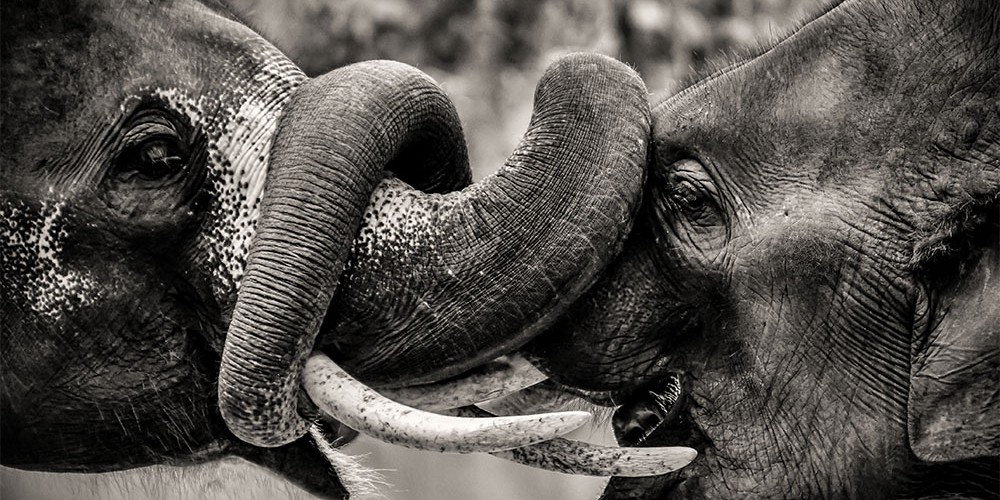African elephant range and history

There are two types of African elephants, the African Bush Elephant and the smaller African Forest Elephant. The African Bush Elephant is the largest living terrestrial animal in the world whereas the African Forest Elephant is the third largest terrestrial animal.

African elephants are found in eastern and southern Africa, tropical rainforest zone of west and central Africa, with the highest densities found in Botswana, Tanzania, Zimbabwe, Kenya, Zambia and South Africa.
Value of elephants to the ecosystem
African elephants are considered a “keystone” species in their ecosystem
- Stop the progression of grassland to forest
- Smaller grazing mammals are supported by the grasses
- Help maintain the trails used by species
- Reduces vegetation around water holes, insures safe drinking spots for all species
Value of Elephants in Africa
- Historically, Africans have either regarded elephants a source of livelihood, or as the host of their ancestral spirits.
- The elephant is a powerful and evocative image in much of the art of Africa.
- The ivory, hair and bone was valued in its rarity to high-ranking chiefs in Africa.
- However, some farmers may view elephants as pests.
– As elephants are being fragmented into smaller and smaller ranges it is often common for elephants to frequently raid and destroy crops, of the local farmers.
Value of Elephants Worldwide
- Many people view elephants as sentient beings that can exhibit a wide variety of behaviours including grief, self awareness, memory, altruism, compassion and possibly language.
- In Asia and other parts of the world an elephants ivory has become a traditional symbol of wealth and status.
Risks to elephant populations
African elephant are arranged in close family units. One family unit is led by an older female known as the matriarch and is made up of around ten females and their calves. The matriarch is known to lead the group because she has excellent memory of remembering important landmarks such as water holes.

- Since African elephants live in families there is a risk that the vulnerable calves will not be able to fend off predators if the adults are poached.
- If the matriarchal elephant is poached the hierarchy of the family may not be maintained.
